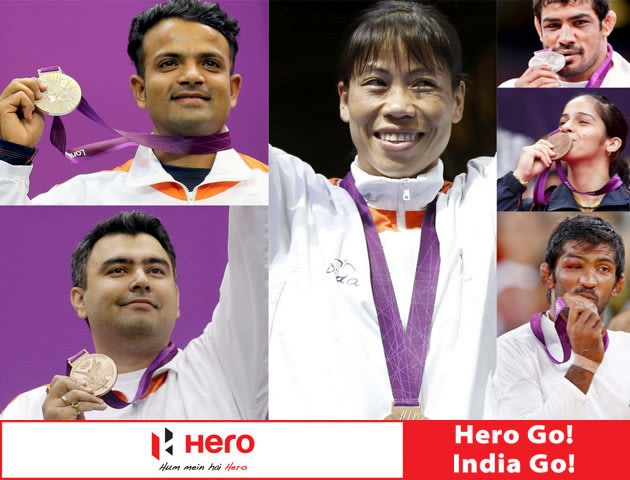
From The Week First Post, "Why can't 1.22 billion Indians win more Olympic medals? There's a reason why Indians do badly in sports that require high levels of physical fitness," by Jonathan Foreman, on 25 July 2012 -- ONE of the most lavish parties thrown in London this week to mark the start of the Olympic Games was that hosted by the London-based Indian steel magnate Lakshmi Mittal for India's Olympic team. It was in effect a celebration of a larger investment that the billionaire has made in Indian athletics.
Since 2005, he has been funding the $10 million Mittal Champions Trust to support 10 Indian athletes with "world beating potential". However, it's a risky investment in an historically feeble enterprise. For India, despite its vast population (1.22 billion at the last count) and genetic diversity, has had an astonishingly unimpressive record in international athletic achievement.

Mittal started his trust after seeing India win only one medal each year at the Games in 1996 (bronze), 2000 (bronze) and 2004 (silver). In Beijing in 2008, the Indian team won three medals including a gold, but was ranked 50th among all the nations participating, behind tiny countries like Belgium, Finland and the Dominican Republic.
So why is India so bad at games, with the obvious exceptions of cricket, hockey and, to a lesser extent, squash?
Although people like to explain it in terms of poor sports infrastructure and the corruption that undoubtedly afflicts sports administration in India, it is much more a matter of culture.

In general India is weak in sports that require high levels of physical fitness. This largely reflects caste and class attitudes to physical effort. This is a society in which even middle-class people will have a servant bring them a glass of water from just a few feet away: for centuries, high status has partially derived from lack of physical effort and the abundance of other people to take the strain for you.
It is only very recently that elite Indians have started jogging rather than slowly walking in parks like the Lodhi gardens in New Delhi, and this very much reflects the influence of the American and British universities their children have been attending for the last couple of decades.

If squash and hockey seems to be an exception, it can be explained by the fact that the country's champions are without exception graduates of a handful of elite British-style boarding schools like Doon, or have come up through the army - institutions that inculcate a Western or British attitude to sport.
Of course there is yoga, but it rarely translates into sporting prowess. There is also a strong tradition of wrestling in some parts of the country, but it has infrequently produced international quality athletes.

This may be because it is rarely practiced by the ruling classes, and as you can see from India's cricket team - largely composed of people from English-speaking backgrounds - those who come from the lower orders have too little access to elite sporting training, facilities and selection. It also does not help that perhaps half the population suffers from malnutrition, with all that entails for physical size and muscle growth.
On the plus side, Bollywood's shift from tubby stars to slim, muscled ones and the arrival of a Western fitness culture seem to be having a positive effect on attitudes to training. There are more and more gyms - though still very few by South East Asian, let alone Western, standards - and there's a growing fashion among the glitterati for personal trainers who come to the house.
Will it all be enough to give India more than three medals this time? Lakshmi Mittal will be watching to see if he's spent his money wisely. (source: The Week First Post)

No comments:
Post a Comment